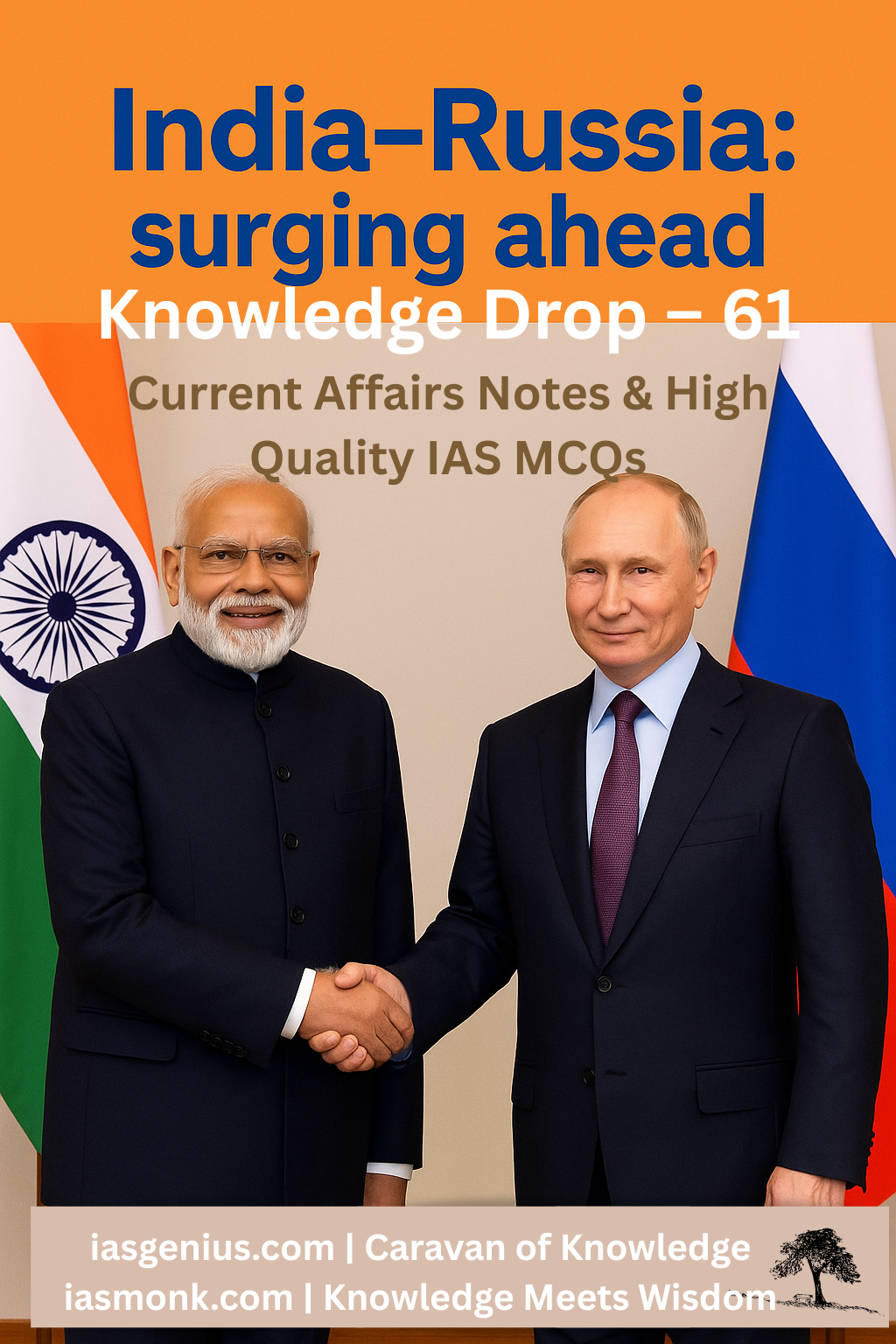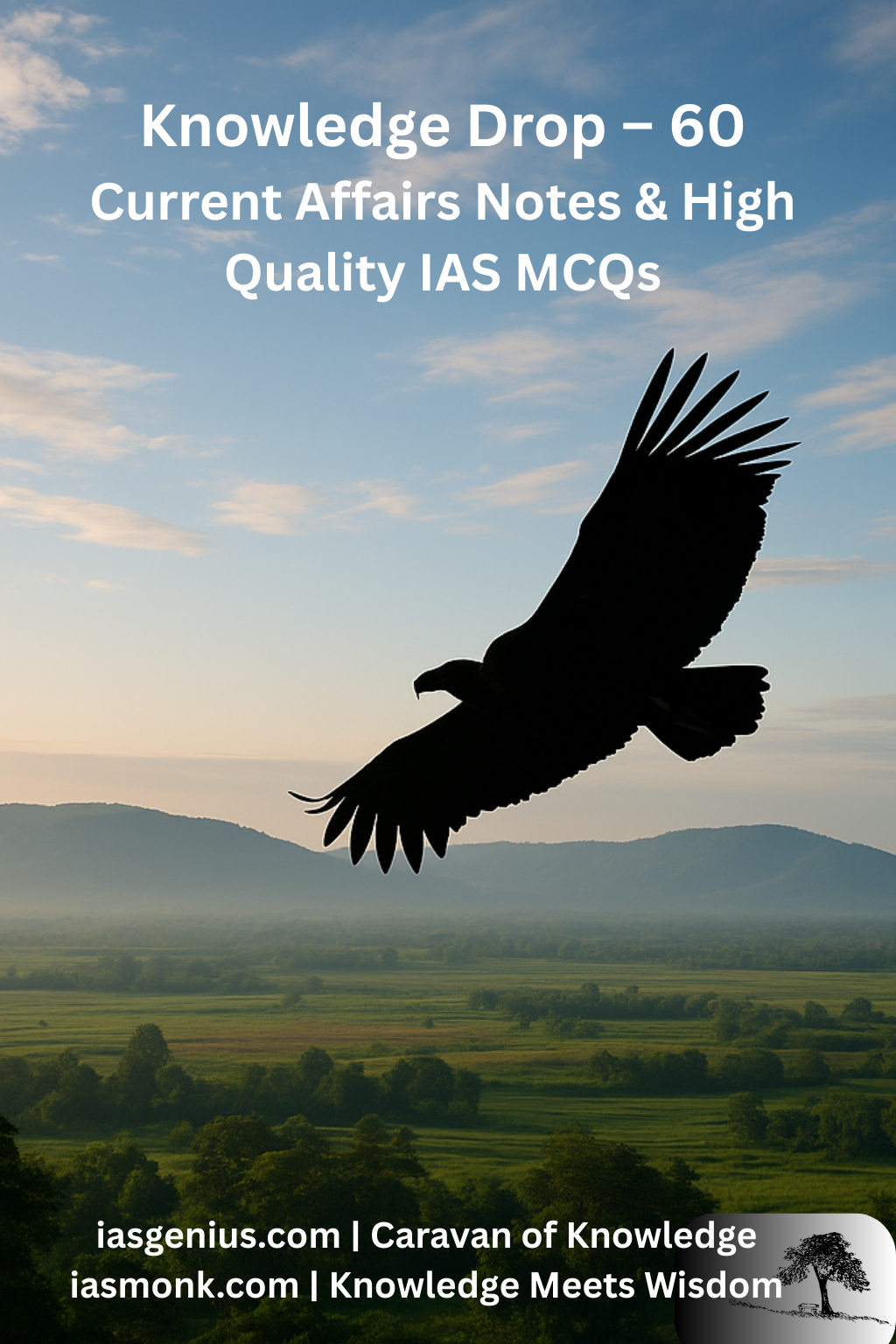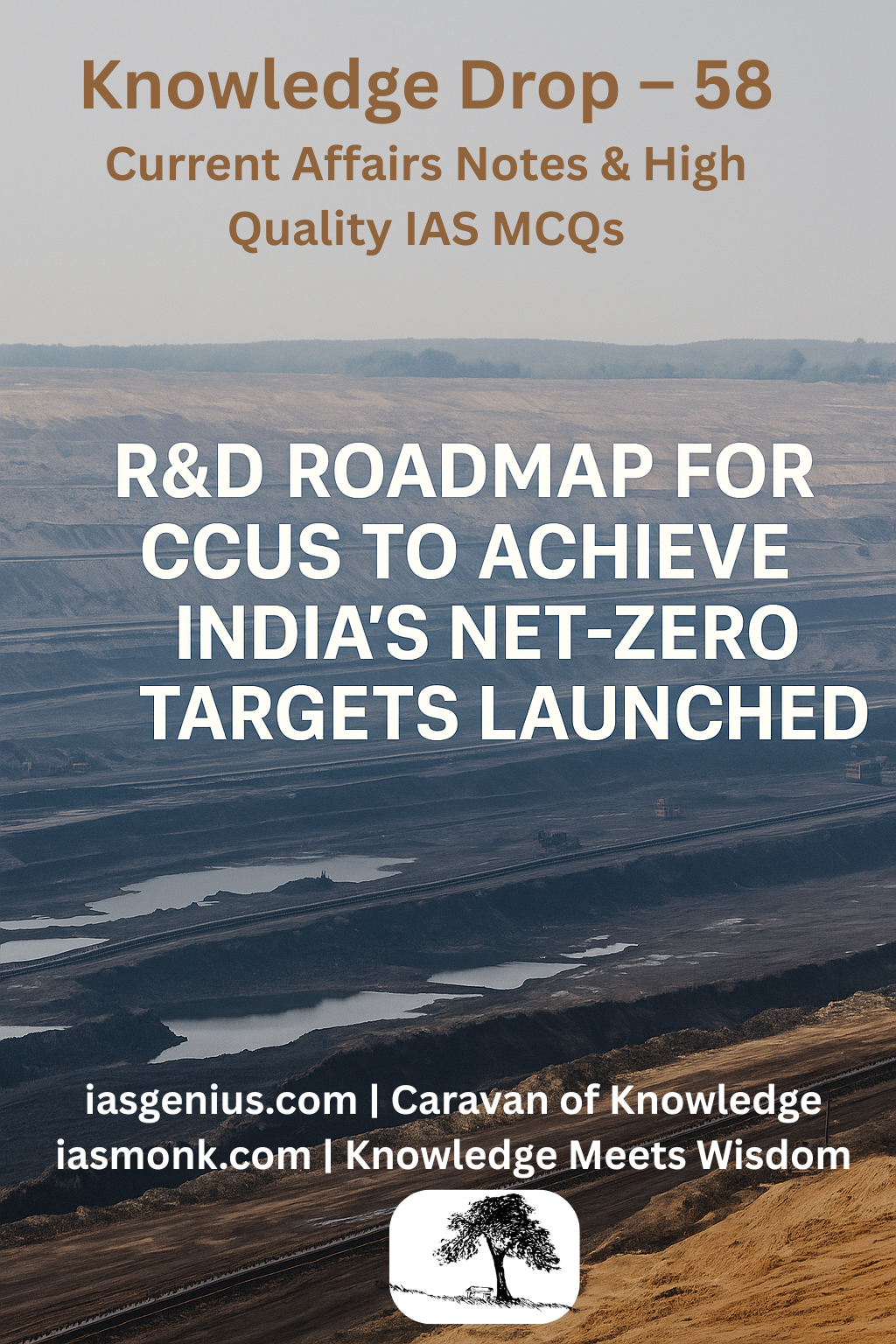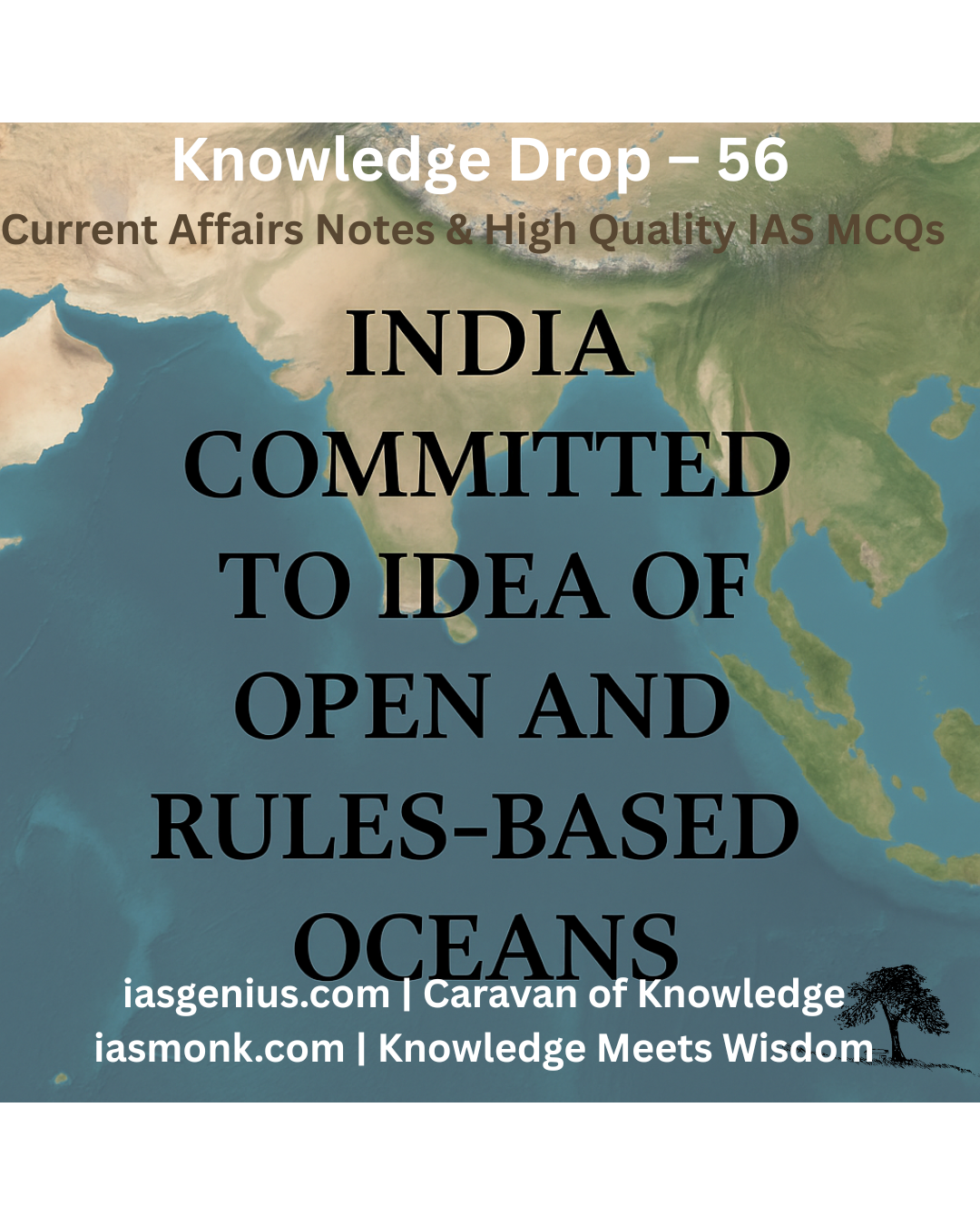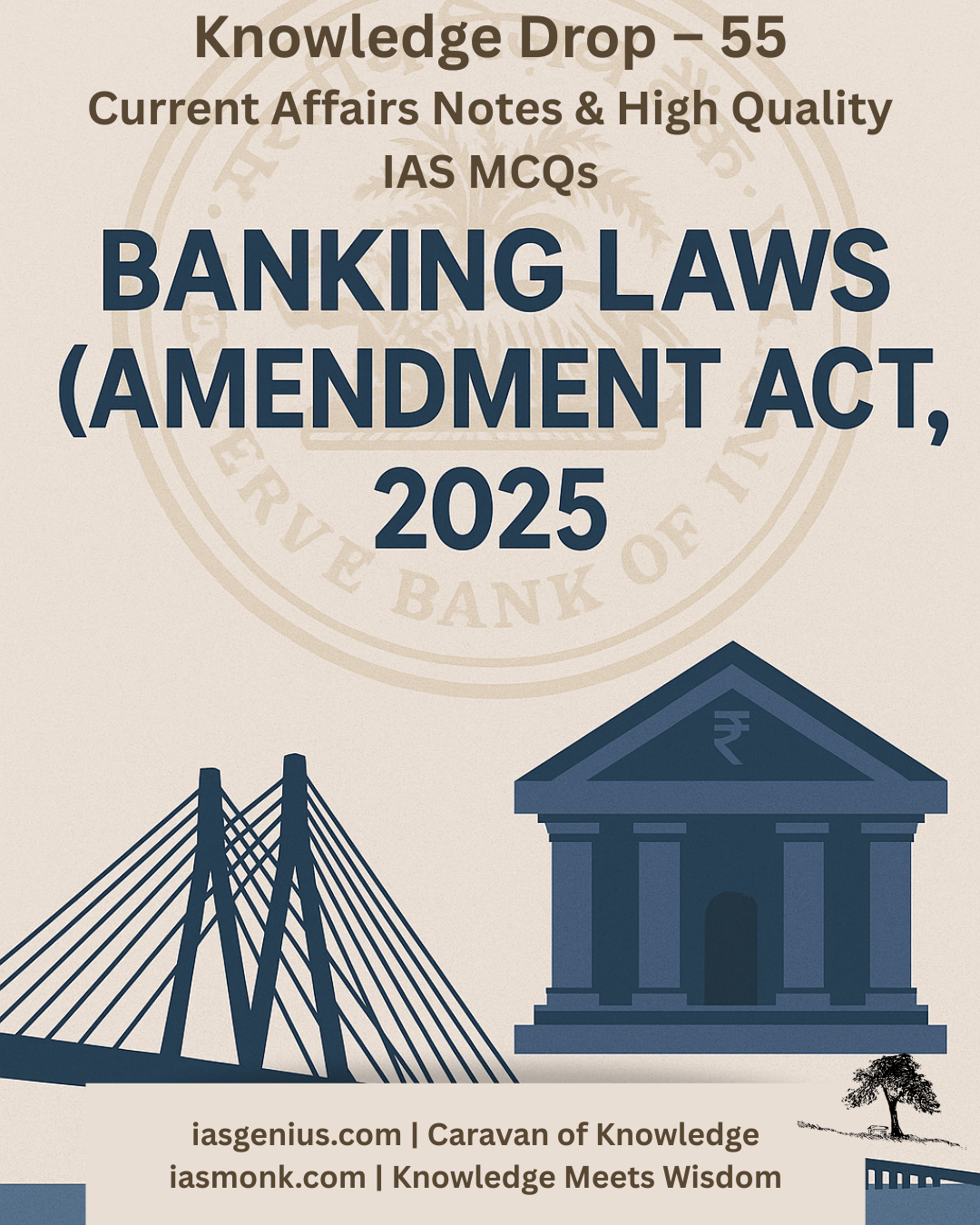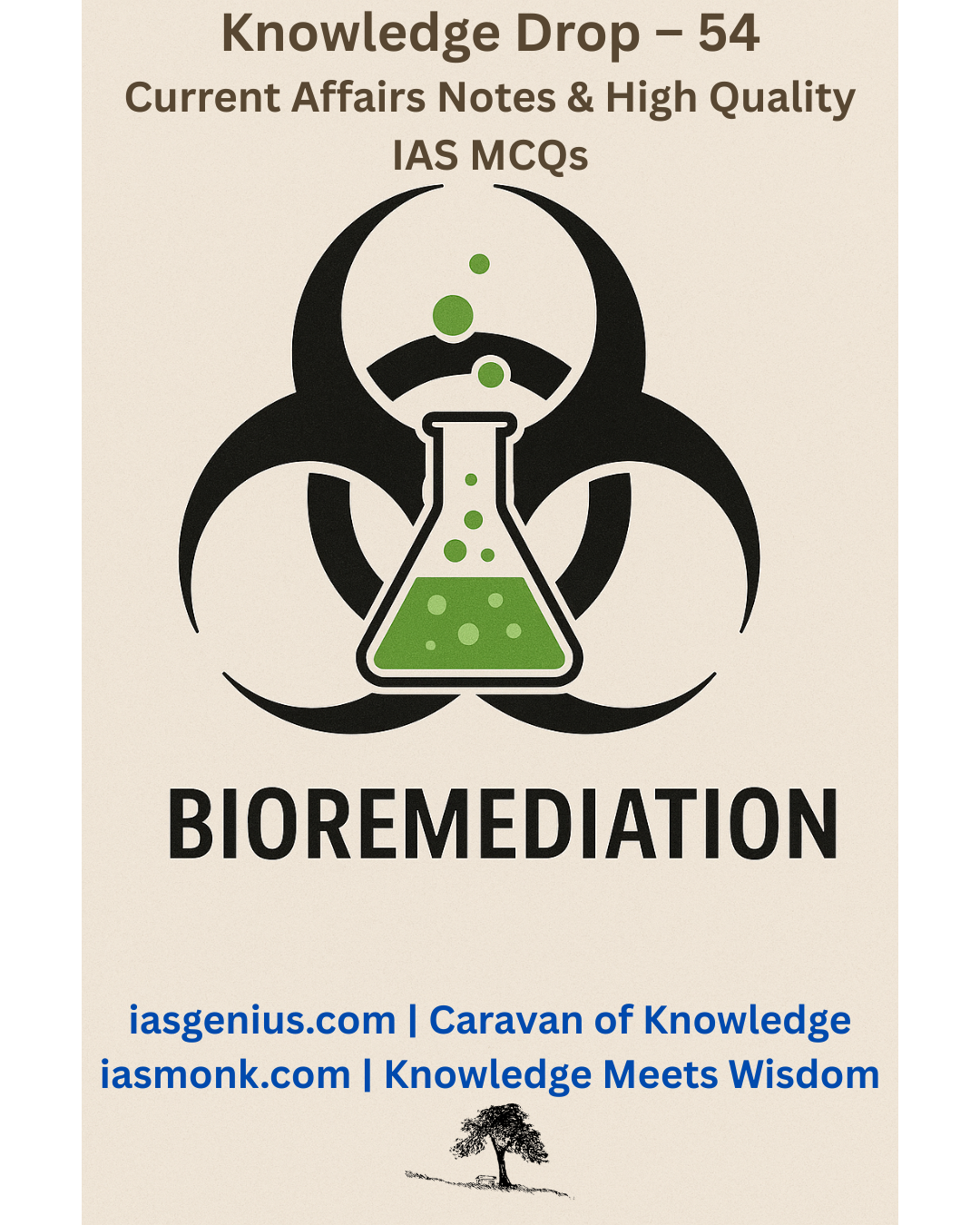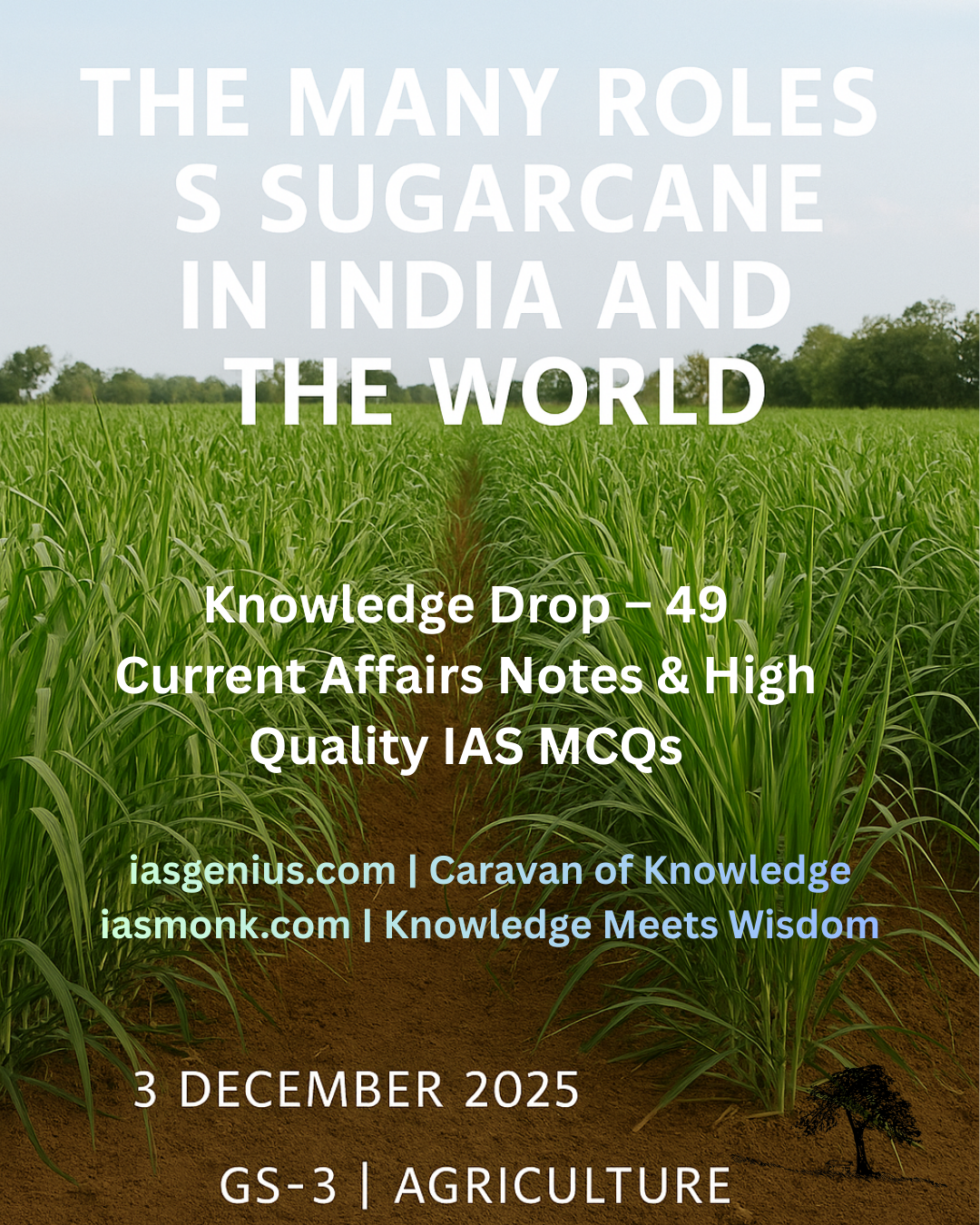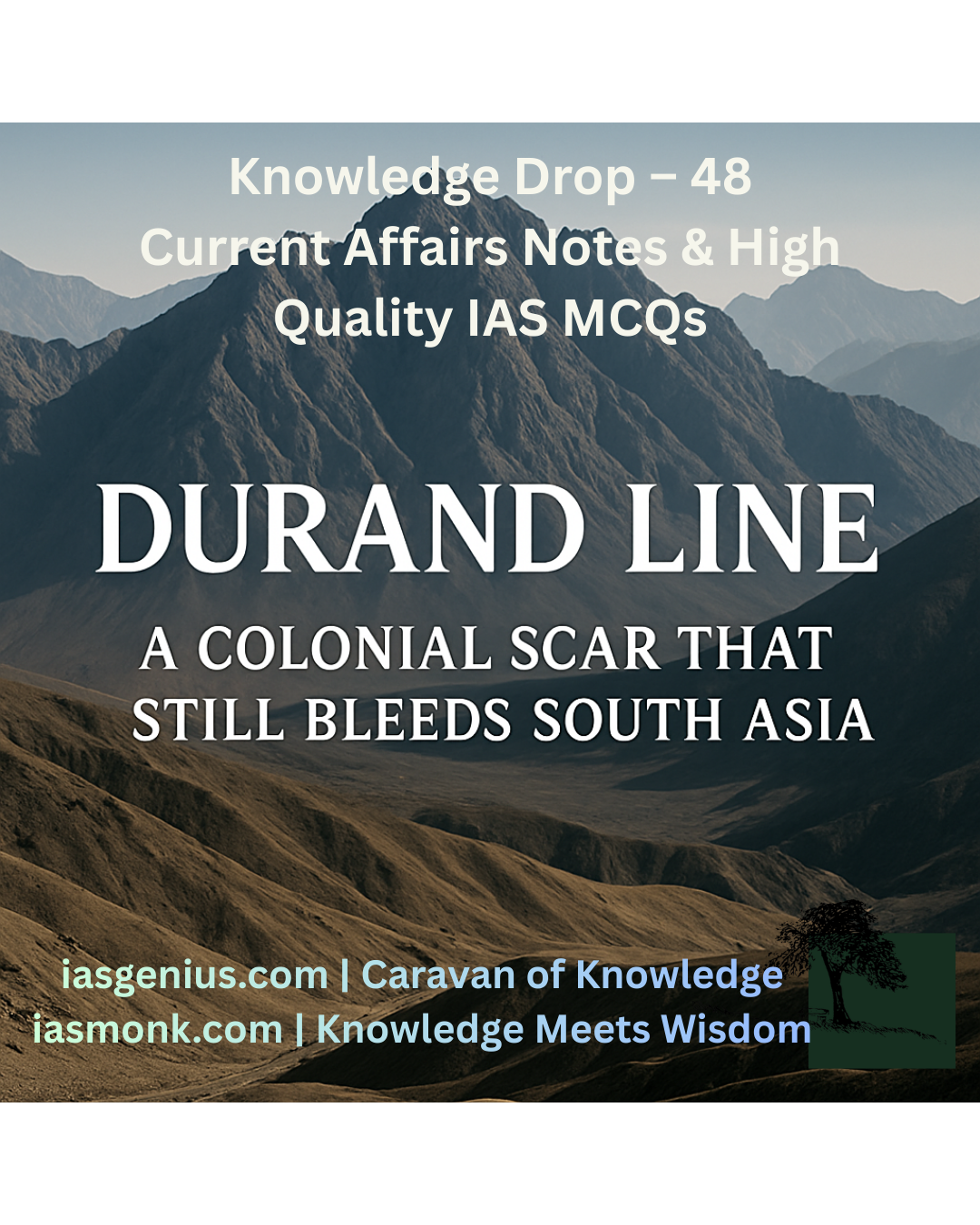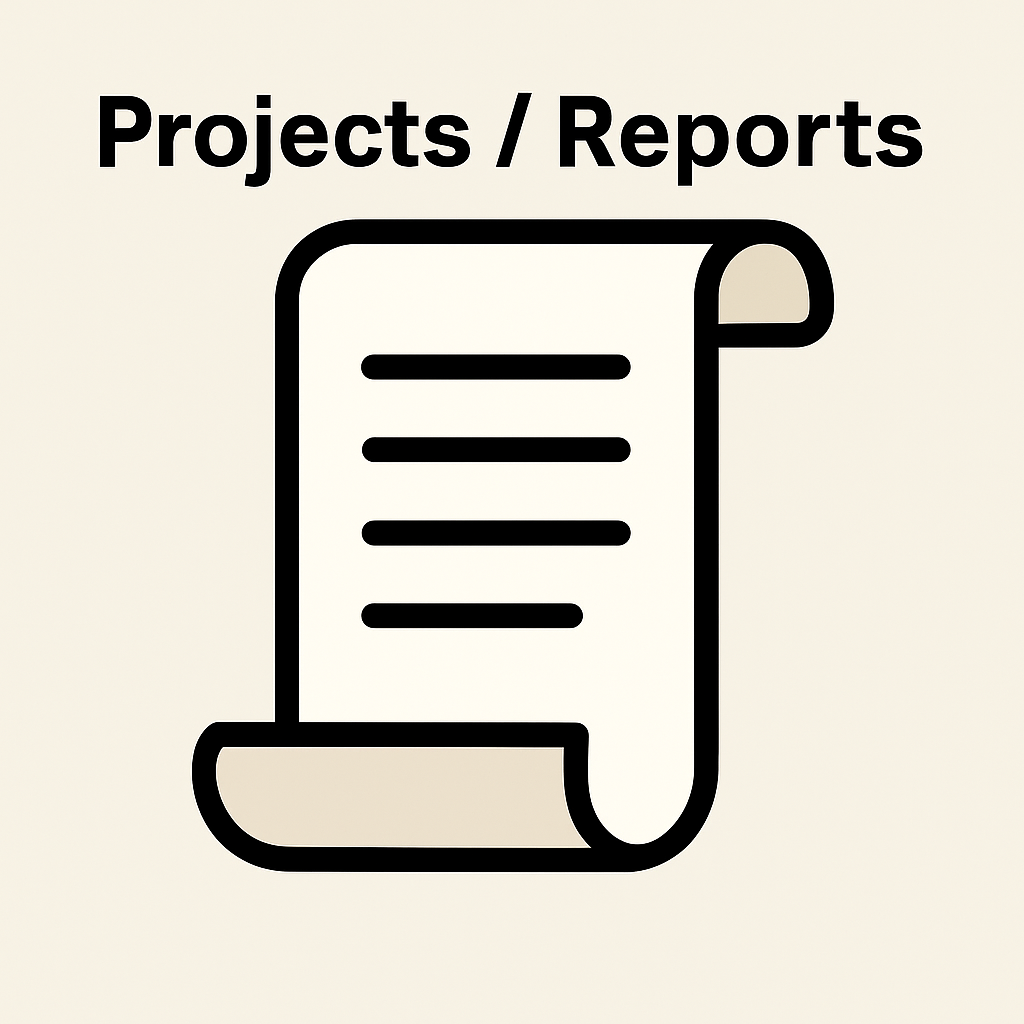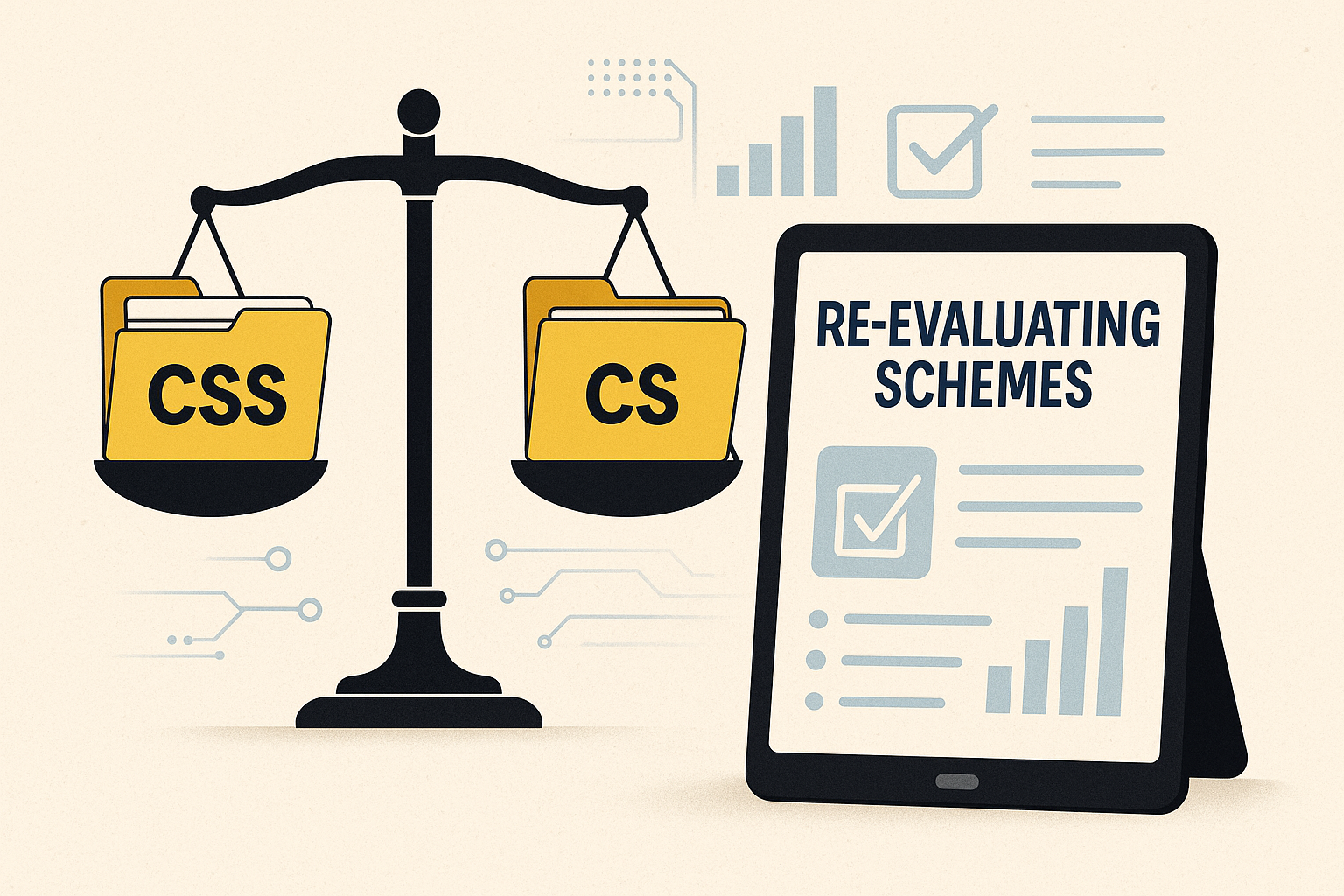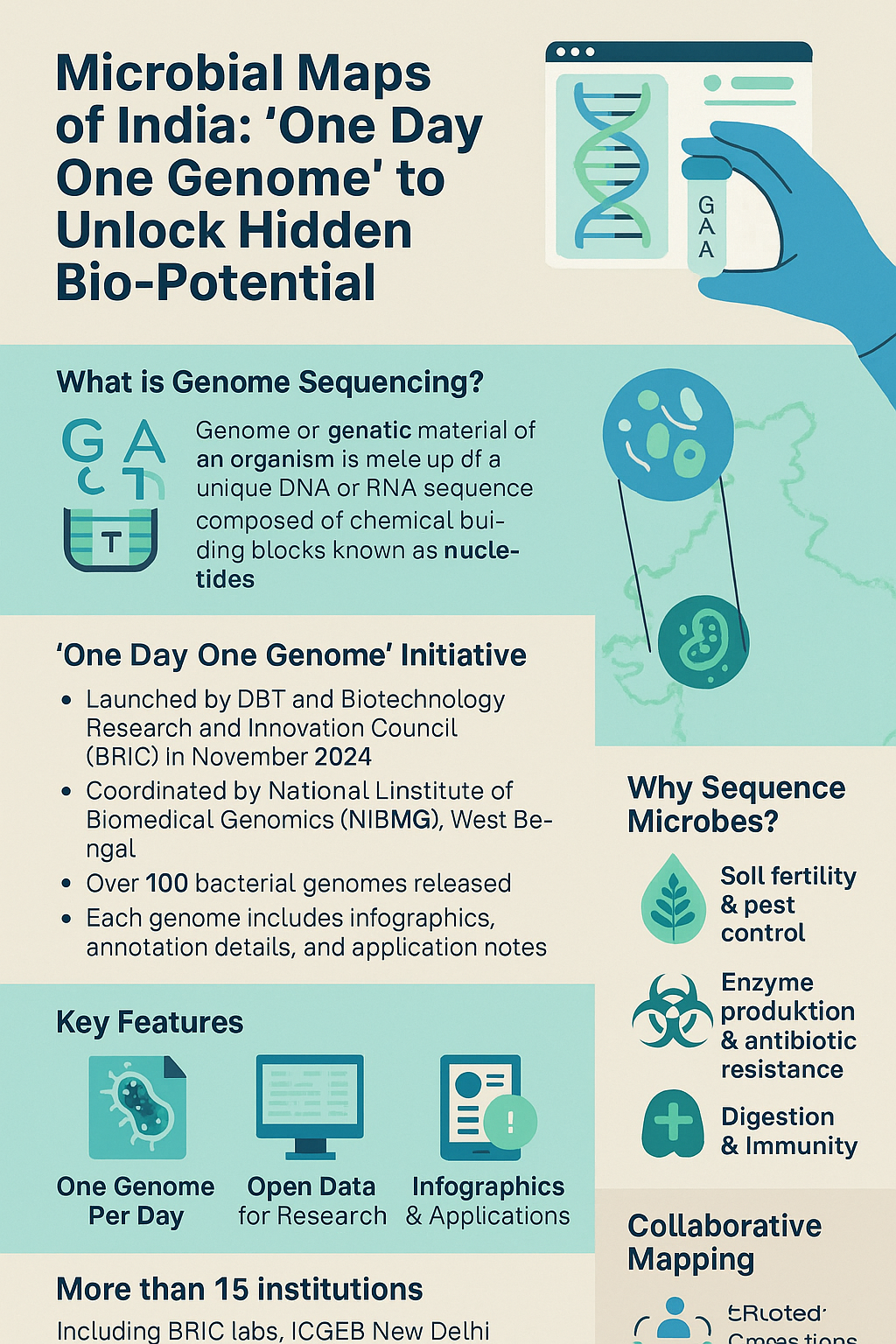
📅 May 6, 2025, Post 4: Microbial Maps of India: ‘One Day One Genome’ to Unlock Hidden Bio-Potential | Mains Essay Attached | Target IAS-26 MCQs Attached: A complete Package, Dear Aspirants!
Microbial Maps of India: ‘One Day One Genome’ to Unlock Hidden Bio-Potential

PROJECTS & INITIATIVES — PETAL 004
🗓️ May 6, 2025
Thematic Focus: Genomics 🔬 | Biotechnology 🌾 | Environmental Science 🌍
🧪 Opening Whisper
A single cell, invisible to the eye, may hold the cure, the compost, and the code for tomorrow’s world.
Key Highlights
• The Department of Biotechnology (DBT), in collaboration with BRIC-NIBMG and 13 BRIC institutions, has launched and expanded the ‘One Day One Genome’ initiative to sequence and release microbial genomes daily, showcasing India’s rich microbial diversity.
• The program was launched in November 2024, coordinated by the National Institute of Biomedical Genomics (NIBMG), West Bengal, with data inputs from ICGEB New Delhi and RCB Faridabad.
• More than 100 bacterial genomes have already been released with graphical summaries, annotations, and potential industrial or environmental applications.
🧬 What is Genome Sequencing?
• Every living organism has a unique genome — a complete set of DNA or RNA made up of nucleotide bases.
• Determining the order of these bases is called genome sequencing, helping scientists decode an organism’s genetic capabilities — from disease resistance to enzyme creation.
🌿 Why Microbial Genomics Matters
• Soil Health & Agriculture: Microbes aid nutrient cycling, nitrogen fixation, and pest control.
• Environmental Protection: Microbial communities participate in biogeochemical cycles, waste degradation, and pollution reduction.
• Public Health: Understanding microbial genetics can lead to better insights on immunity, digestion, and antimicrobial resistance.
• Industrial Use: Genome data can enable development of bioactive compounds, biofertilizers, bioplastics, and green enzymes.
📊 Key Features of the Initiative
• One Genome per Day: Highlights new microbial discoveries daily in an accessible, visual format (infographics + industrial potential)
• Open Data Sharing: Enables Indian researchers, students, and biotech firms to access verified genome data for R&D and innovation
• Collaborative Mapping: Draws from national scientific institutions to build India’s microbial catalogue
🔍 Do You Know? – GenomeIndia Project
• Launched by DBT to sequence 20,000 individuals across 83 ethnic populations in India.
• So far, 10,000 whole genomes have been sequenced and archived in the Indian Biological Data Centre.
• Aims to power precision medicine, population genetics, and affordable diagnostics tailored to India’s genomic diversity.
• Governed by BIOTECH-PRIDE guidelines under the FeED data-sharing protocol.
🛣️ Way Forward
• Link Agriculture & Biotech: Apply microbial genomic data for crop improvement, soil revitalization, and natural pesticides.
• Promote Bioeconomy Startups: Use this data to boost microbial product innovation in bioremediation, health, and fermentation sectors.
• Public Engagement: Make microbial science accessible through visual infographics, school outreach, and media campaigns.
• Protect Indigenous Microbiota: Ensure sequencing efforts respect bioethics and benefit-sharing, especially for tribal and ecological hotspots.
🧭 GS Paper Mapping
• GS Paper 3 – Science and Technology
🔹 Genome sequencing, microbial applications, bioinformatics
• GS Paper 2 / 3 – Health / Environment
🔹 Disease prediction, AMR solutions, biotechnological governance
💭 A Thought Spark — by IAS Monk
Within a teaspoon of soil lies more intelligence than we have yet understood — genomes of resilience, adaptation, and hidden harmony. Sequencing them is not just science — it is listening to the smallest whispers of life.
High Quality Mains Essay For Practice :
Word Limit 1000-1200
Genome: Past, Present, and Future — The Language of Life and the Whisper of Destiny
Introduction: Where the Book Begins
Hidden inside every living being is a script. Not written in ink, but in base pairs — adenine, thymine, guanine, cytosine — four letters that shape the skin of a cactus, the wings of a dragonfly, the eyes of a child, and the breath of a whale. This script is called the genome — the complete manual of life, etched in the language of evolution, corrected by time, and passed silently from one generation to the next.
To trace the journey of the genome is to walk alongside Nature’s author, through epochs of randomness and design. From the primordial soup of ancient Earth to the blinking screens of genome sequencers today, and toward a future where life might be rewritten — the genome’s story is our story, stretched across past, present, and the glimmering edge of what is yet to be.
I. The Past: Discovering the Alphabet of Life
The genome’s existence predates humanity by billions of years. But our understanding of it began only a few centuries ago — in whispers and questions.
When Gregor Mendel sowed peas in his monastery garden, he was, unknowingly, tilling the soil of genetics. But it wasn’t until 1953, when James Watson and Francis Crick, inspired by Rosalind Franklin’s X-ray images, proposed the double-helix model of DNA, that the genome stepped into the scientific spotlight. The helix was not just beautiful — it was precise, replicable, poetic in symmetry. Life, they showed, could be reduced to a string of code.
What followed was a cascade: from the discovery of RNA, genetic codes, and mutations, to the launch of the Human Genome Project in 1990 — humanity’s first attempt to map its own instruction manual. It took 13 years to read that 3-billion-letter sentence — one that would later be read in days, then hours.
The past gave us the grammar of life — nucleotides, genes, chromosomes, inheritance. But it also left questions unanswered: What makes us human? What parts of our genome are junk, and what parts are prophecy?
II. The Present: Genome as Power, Puzzle, and Mirror
Today, the genome is no longer an enigma. It is a tool, a mirror, and sometimes, a weapon.
In the field of medicine, genome sequencing has transformed how we see illness. From rare genetic disorders to cancer predispositions, from pharmacogenomics to precision medicine, doctors now look at patients not just as bodies, but as codes that can be interpreted, repaired, or rewritten.
In agriculture, genome editing (like CRISPR-Cas9) is creating drought-resistant rice, pest-immune maize, and even climate-adaptive livestock. Farmers, once dependent on seasons, now have access to seeds shaped by science.
In forensics, ancestry research, paleogenetics, and conservation biology, genome sequencing is revealing hidden lineages, extinct creatures, and endangered species’ secrets. The genome is helping us remember what we were, even as it shapes what we might become.
And yet, even in its glory, the genome remains a puzzle. The human genome, for instance, is 98.8% similar to that of a chimpanzee — yet a gulf of consciousness separates us. The genome has not told us everything — but it dares us to ask better questions.
III. The Future: Rewriting the Code, Reimagining Life
As we step into the future, the genome no longer waits to be read — it waits to be written.
Through gene therapy, we are beginning to edit defective genes in living humans. In-vitro gene correction, especially for conditions like thalassemia, hemophilia, and sickle cell anemia, offers hope where once there was silence. CRISPR technology is advancing from labs to clinics — from promise to practice.
The idea of “designer babies”, once relegated to dystopian fiction, now looms as a moral question: Should we allow parents to select not just health, but intelligence or eye color? Where does treatment end, and enhancement begin?
Projects like GenomeIndia are attempting to map the diversity of India’s ethnic fabric, so that public health, vaccines, and diagnostics may become indigenous, inclusive, and affordable. The ‘One Day One Genome’ initiative for microbes is unlocking new solutions in agriculture, climate, and health by sequencing the unseen allies of Earth.
In the near future, AI-powered genomics could predict not only diseases but behaviors, moods, even preferences — giving rise to bioethical dilemmas that legislation is still unprepared for.
But amidst all this, one truth remains: The genome is not destiny. It is potential — interpreted by environment, shaped by culture, and guided by choices.
IV. Ethical Frontiers and Philosophical Echoes
With great power comes great responsibility — and the genome is power incarnate.
Should we edit out disability, or embrace neurodiversity? Should genomes be patented? Who owns the genome of a tribal community’s medicinal plant? Can data be open and still be respectful?
These are not just scientific debates — they are moral crossroads. For if we begin to edit ourselves too freely, do we not risk erasing the randomness that made life resilient, beautiful, and diverse?
The genome may be a blueprint — but blueprints are not homes. What we build with them, and who gets to build, will determine whether the genomic revolution becomes a renaissance or a rupture.
Conclusion: The Code and the Candle
The genome is not just a code; it is a candle lit by evolution, passed through time, fluttering in every heartbeat. We have learned to read it. We are learning to write it. But in doing so, may we not forget to respect it.
The past gave us its language. The present gives us its utility. The future asks us for humility — and perhaps a little poetry. For in the quiet of a cell, between four humble bases, lies the music of life — fragile, powerful, and still being composed.
Quote to End With
“The genome is a poem not yet finished — we may add our verses, but let us never forget the rhythm that nature wrote before us.” — IAS Monk
Target IAS-26: Daily MCQs :
📌 Prelims Practice MCQs
Topic:
MCQ 1 – Type 1: How many of the following statements are correct?
Q. Consider the following statements regarding the ‘One Day One Genome’ initiative:
• 1) It is coordinated by the Biotechnology Research and Innovation Council (BRIC) and National Institute of Biomedical Genomics (NIBMG), West Bengal.
• 2) The initiative involves genome sequencing of humans from tribal communities across India.
• 3) It aims to make microbial genome data accessible for scientific and industrial use.
• 4) The initiative includes visual summaries, gene annotations, and industrial applications for each genome release.
Options:
A) Only two
B) Only three
C) All four
D) Only one
🌀 Didn’t get it? Click here (▸) for the Correct Answer & Explanation
✅ Correct Answer: B) Only three
🧠 Explanation:
• • 1) ✅ Correct – The initiative is jointly coordinated by BRIC and NIBMG, West Bengal.
• 2) ❌ Incorrect – This refers to the GenomeIndia Project, not the ‘One Day One Genome’ initiative.
• 3) ✅ Correct – Aims to make microbial genome data available for use in science and industry.
• 4) ✅ Correct – Each genome release includes infographics, annotations, and potential applications.
✅ So, only 1, 3, and 4 are correct.
MCQ 2 – Type 2: Two-Statement Based
Q. Consider the following statements regarding genome-related projects in India:
• 1) The Genome India Project has completed sequencing of 10,000 whole human genomes from diverse Indian populations.
• 2) Data from Genome India will be made accessible under BIOTECH-PRIDE guidelines via the FeED protocol.
Which of the above statements is/are correct?
A) Only 1 is correct
B) Only 2 is correct
C) Both are correct
D) Neither is correct
🌀 Didn’t get it? Click here (▸) for the Correct Answer & Explanation
✅ Correct Answer: C) Both are correct
🧠 Explanation:
•• 1) ✅ Correct – The GenomeIndia Project has already sequenced 10,000 genomes and aims to catalogue 20,000 samples.
• 2) ✅ Correct – The data is archived in the Indian Biological Data Centre and governed by BIOTECH-PRIDE guidelines under the FeED protocol.
✅ Both statements are correct.
MCQ 3 – Type 3: Which of the following statements is/are correct?
Q. Which of the following are objectives of the ‘One Day One Genome’ initiative?
• 1) To unlock the microbial potential for environmental sustainability, agriculture, and human health
• 2) To replace the GenomeIndia project as India’s primary genomics effort
• 3) To publish genome data in accessible formats including infographics
• 4) To develop gene therapies using human stem cells
Options:
A) 1, 2, and 3 only
B) 1 and 3 only
C) 2 and 4 only
D) All four
🌀 Didn’t get it? Click here (▸) for the Correct Answer & Explanation
✅ Correct Answer: B) 1 and 3 only
🧠 Explanation:
• 1) ✅ Correct – The initiative aims to harness microbial genetics for soil health, biogeochemical cycles, and human wellness.
• 2) ❌ Incorrect – It complements but does not replace the GenomeIndia project.
• 3) ✅ Correct – Infographics and user-friendly summaries are part of each genome release.
• 4) ❌ Incorrect – No mention of gene therapy or stem cells in this microbial-focused project.
✅ Only 1 and 3 are correct.
Q. Which central body manages the ‘One Day One Genome’ microbial sequencing initiative in India?
A) Indian Council of Medical Research (ICMR)
B) National Centre for Genomic Research (NCGR)
C) National Institute of Biomedical Genomics (NIBMG)
D) Indian Institute of Genomics and Integrated Biology (IGIB)
🌀 Didn’t get it? Click here (▸) for the Correct Answer & Explanation.
✅ Correct Answer: C) National Institute of Biomedical Genomics (NIBMG)
🧠 Explanation:
• The One Day One Genome initiative is coordinated by NIBMG, West Bengal, under the Department of Biotechnology in collaboration with BRIC and other institutions.
✅ Correct answer: NIBMG.

